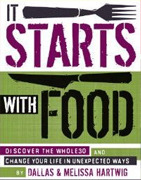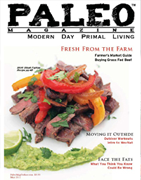Alternaria alternata ... The Mold That Could Be The Trigger
I had never heard of Alternaria alternata until I started really delving into what could be at the root trigger of my latex reactions. This is a mold/fungus that has been recorded causing leaf spot and other diseases on over 380 various plants. I didn't know until I started down this research path that A. alternata is recognized as an important allergen with airborne spores and mycelial fragments (he vegetative part of a fungus or fungus-like bacterial colony) being responsible for the allergic symptoms in individuals with rhinitis or bronchial asthma. Asthma is also something that until the last several years has been a thorn in my side.
A study was done where dust samples were collected from a bed, a sofa, or a chair, and from bedroom, living room, and kitchen floors as data as part of the National Survey of Lead and Allergens in Housing. What they found was that exposure to A alternata in US homes is associated with active asthma symptoms. This was in 2006. Later in 2014 they dug deeper and what they found was that only eight recombinant single allergens from three mold species are available for molecular allergy diagnosis of mold sensitization. This showed that the major allergen in Alternaria alternata-sensitized individuals was potential cross-reactivity to mold, food and natural latex allergens.
So when I think about this in terms to my body, I had to go down the rabbit hole of food. I have listened to Dave Asprey talk about mycotoxins and just let it flow over me for years. Now I realized I needed to listen. Alternaria toxins can be found in grains when drying in the field and harvest are delayed by rain, high humidity, or early frost, mostly in sorghum. Post harvest occurrence of Alternaria species in fruits and vegetables is more common because the moisture content remains high after harvest, and have been seen in apples all the way into the core, oranges, tomatoes, alfalfa, dry bog cranberries, carrots, eggplant, blueberries and bell peppers. It has also been found in nuts, including peanuts, hazelnuts, and pecans, papaya, wheat and cold-stored meat and spices. In my head as I am reading this I keep thinking nightshades, latex, and about autoimmune diet protocols and thinking things are syncing up. This also may explain why when I have these fruits and veggies after they have picked at their prime, flash frozen and then low temp dehydrated, I just have no problems with them. Infection requires germination.
This mold is also found one of the common molds isolated in grapes and responsible for the spoilage of wine because they produce anti-yeast metabolites. Being that this is a high mold in plant-based spoiled foods, it makes me think that it is probably in a lot of plant-based packaged foods and do to preservatives we don't even know it.
Up to 80% of infections in the body affecting the body systems are associated with biofilm formation. One thing I found is that they are starting to use surfactant as a tool to reduce mold on foods, and in studies targeting biofilms in the body. Will this come back to bite us in the butt later on? I don't know. As humans we are quite pretty but often very stupid. I do know that molds generally do not grow in or even on the surface of biofilms. Alternaria is not a common colonizer of biofilms, and so I don't see it as being a great impact overall in these current studies to remove these infections from our foods.
Part of this latest latex reactivity cycle started in the perfect storm. I had my hair cut and starting using hair spary again. I bought a bunch of Perricone MD makeup and was getting all done up. I was using a facial oil that comes from a latex-based fruit, and I started using CBD oil for my joint pain. (without stopping the incoming nightshade foods that I love). Cannibis use is associated with sensitization to specific allergens, including molds, dust mites, plants, and cat dander. Alternaria alternata frequently blights marijuana and produces a toxin called alternariol, which is also high in sunflower. Sunflower is my most serious food allergy. Since up to 70% of mold allergy patients have skin test reactivity to Alternaria, the question is chicken and the egg. So I have an alternariol allergy or a alternaria allergy as the core of my allergy bundle? What a question, right?









































0 comments:
Post a Comment